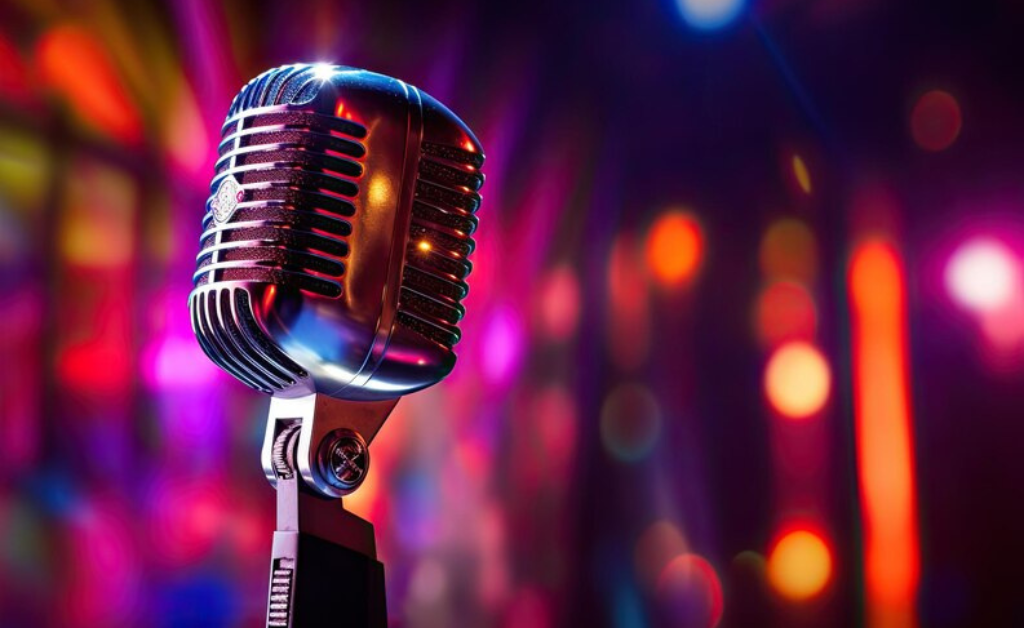Music Is the Devil’s Tool: Unveiling the Controversy
Music Is the Devil’s Tool while it always has been valued as one of the most important means of activism and definition of cultural values. But at the same time it has also been called by some as a negative force, to the extend that some prefer to refer to it as ‘Music Is the Devil’s Tool.’ This has been a concept that has fuelled discussions, religious ban and Moral crusade and more especially in rock, pop and secular music. Beginning with charges of Satanists influences to concern about the youth rebellion the negativity associated with some genres of music has significantly influenced both pop culture and culture more largely. Explore the story of music controversy and effects it has in today’s society.
I shall recount origins of the controversy from the time when feed and water were rationed and plans for its rationing were made.
Conservative theology and fundamentalist view on Music Is the Devil’s Tool predetermines that it cannot be otherwise. The mystics of the Medieval ages had censured secular music as evil and responsible for the degeneration of the soul as well as the spirit. This fear was especially in the 20th century, yet amplified with the emergence of rock n roll as a defiance of the traditional cultural morality. These claims were bolstered by conservative voices like Jerry Falwell and the Christian Coalition’s association of music with the decay of American culture and Satanism.
Is Rock Music Really Sending Satanic Messages
Surge in the conflict of generations began in the 1950s and 1960s with the advent of a new type of music – rock’ n’ roll. Several religious organizations claimed that rock artist rehearsed messages associated with the devil in their songs using a technique called backmasking.Music Is the Devil’s Tool Healing evangelists such as Bob Larson and Frank Garlock claimed that such secret messages were acts of spiritual battle to entice the young astray. Groups like Led Zeppelin and Black Sabbath were targeted in this moral crusade because their albums were considered to be encouraging satanistic practices as well as moral degeneration.
Also Read: https://creatify.click/a-fortune-telling-princess
It deals with moral panic and rebellion of young generations.
Music Is the Devil’s Tool has always been a matter of fantasy, associated with revolt and disobedience, problematic behavior in general.Music Is the Devil’s Tool This fear was most rife during the counterculture era, 1960 and up to the mid 1970’s. Bands such as Def Leppard, Motley Crue, Cypress Hill, and Nirvana are all accused of having sex and drug infested albums concerning the Parents Music Resource Centre (PMRC), co started by Tipper Gore. These brought about changes which included the putting forward of parents’ warning stickers on albums as the notion that specific sorts of music were a threat to morality was advanced even more.
Emerging with religious condemnation and entering the territory of spiritual warfare
The religious authorities’ negative attitude towards music partly arises from fear of its capability to influence the moods of people adversely to the spiritual positions. The idea of music being a tool of the devil falls perfectly into frameworks of culture being a weapon in the fight against evil. Dave Noebel and others refused rock and pop music labeling them as not just entertainment but tools of the war against humanity. This particular rhetoric began to spread and especially in Bible Belt where conservatism governs the religious doctrines.
The Backmasking Controversy
Backmasking was the primary reason for religious hatred towards music in the late 20 century. Some people said that artists are putting reversed meanings in songs, and even though one cannot hear it, it will affect the people. Most of these accusations were dismissed as mere slander or mere coincidence, yet they created a moral panic. The belief backed up by Bentley that music possessed implicitly satanic messages helped strengthen the notion that it acted as a means of spiritual degeneration.
The Role of the Religious Right Movement
The Religious Right Movement was central in the continuation of the belief that music belongs to the devil. Some of the organisations including the American Family Association and Focus on the Family focused on music as being antithetical to cultural conformity and as a representation of evil. By means of campaigns and broadcasts as well as producing educative literature, they aimed at raising parents’ consciousness on what they considered to be threatening in secular and rock music. Their efforts mirror an era’s propensity to worry about the shifting standards of popular culture.
Transcultural Studies and Listening Ethics
Music Is the Devil’s Tool importantly the notion of morality in music has been a notion that has been propounded in Christian theological circles. Religious puritans have time and again recommended that music should be pure and should elevate the spirit. Such deviations from these standards as provocative lyrics or unconventional rhythms are returning to culture a negative reaction. This discussion shows the conflict of interest between liberty in the arts and culture, and tag on societal morality.
It is evident from the following works that musical censorship and its influence are significant쩨
Due to Music Is the Devil’s Tool being considered as the devil’s instrument, different extents of musical censorship have taken place, from the banning of entire albums, to limiting their airplay. The changes being sought by the PMRC constitute an excellent example of the process through which moral panic impacts on policy-making. Some considered these actions as essential to maintain social norms, whereas others regarded them as an interference with creation. This constant battle proves the impossibility of achieving a balance between the right to free speech and prejudice.
Religious Arguments about Effects Induced by Music
As was with sexuality, arguments about music commonly revolve around the question of its ability to affect feelings and actions. Critic interprets foreshadowed certain types of music which are related to rebellion and hedonism that leads an individual to moral depravement. Music Is the Devil’s Tool From this viewpoint, music has been viewed not as an ethnomusicological creation but as a force pregnant with deep metaphysical consequences.
Age difference shows that convergence occurs through such factors as generational conflict and formation of musical rebellion.
Music Is the Devil’s Tool has always been an area of confrontation between generations, as young musicians switched the paradigm of their elders. At some point, rock music was a way to rebel against tradition, though many feared that youths would be led astray. Music Is the Devil’s Tool This generational gap is especially visible in disputes as to the moral acceptability of modern music, while representatives of the young generation see modern songs as dangerous in this sense.
Here, counterculture movement will also be linked to lyrics protest of musicals.
Music Is the Devil’s Tool of the late 1960s and early 1970s was a vulgarity that arose like a reaction against the traditional culture. Songs then sung carried messages of protest touching on issues such as war, civil rights and women’s rights. However, these themes appealed to young audiences though at the same time the films were criticized by moral integrity groups as eradicating culture.
The Paranoia of Satanic Influence or just Artistic License?
This has always been a premise that musicians are using the instrument of the devil to make Music Is the Devil’s Tool, thus failing to appreciate the art behind making music.Music Is the Devil’s Tool This is because other artists have opted to use provocative images or subject matters to make their work loaded statements and these too have been misconstrued to mean that the artists endorse satanic issues. This oversimplification of music does not consider the possible motivation for making music or the possible politically ‘incorrect’ messages that music contains, and transforms it simply into a rebellion instrument.
Also Read: https://lyrifii.com/lets-catch-a-rooster-sheet-music/
Music as Narration and the Dilemma of Spirituality
It is in this context that the Music Is the Devil’s Tool as narrated can also engage on themes of sin and salvation and therefore spirituality involves conflict. Some critics however have hailed it as glamorization of negative factors while others see it as emulation of life. This is why There is nothing right or wrong when it comes to music because it raises questions concerning the human side of cultures.
Religious fear and cultural taboo
Primordial fear of religion and taboo culture considers music as the possession of devil. This mindset is most of the time brought about by the need to defend the heritage in times of changing society. Nevertheless, it also strongly describes the possibility of encountering obstacles in the interaction between new cultural practices and the preservation of faith.
FAQs
1. Music Is the Devil’s Tool, or work of the devil, and this raises the following questions:
This may have been so since music has been described as the devil’s tool because of the role it was believed to play as a stimuli for different mood and conduct labeled as rebellious or immoral. For this reason, this belief grounds itself on religious and cultural perspectives concerning the effects of secular music.
2. What is backmasking and why became it a subject to controversies?
Behind the concealing of a musical piece is backmasking, which involves submerging a backward message within a musical piece that listeners of the piece state have meanings. Despite being largely discredited in modern times it continued stoking moral panic and charges of satanism and other related acts in the 20th century.
3. In what ways did the PMRC affecting music censorship?
In the 1980s, the Parents Music Resource Center (PMRC) promoted for censorship against music that included vulgar content with the influence of Pledge of Allegiance to label the records as containing parental advisory. These lyrics and dance was a way of expressing the concern people had about moral degeneration in society and particularly in America.
4. Is Rock Music Is the Devil’s Tool?
No, rock music is not satanic at all. As much as certain artists may depict bad themes, this is mainly so as to create art rather than support influence of bad characters.
5. What part does the Religious Right Movement have in this picture?
The Religious Right Movement has long opposed secular and rock music traits as a social decay of traditional ethical beliefs. The effect of their campaigns is to a large extent apparent in determinations made by the public and policy makers, specifically concerning music morality.



